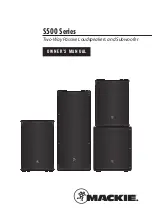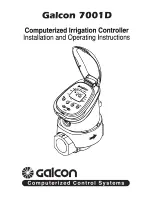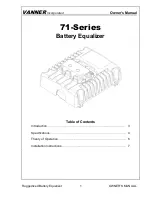
Page 14
Copyright © 2005 - ASR Electronics. All rights reserved.
straighten the lead before removing the component from the board. Solder the white hookup wire to C1529
“+”, and the grey wire to C1529 “-”. The red hookup wire goes to C1528 “+”, and the orange to C1528 “-”.
If the installation is input only, you’ll also need to connect the Co12V and the Standby wire. The
photo below left shows these wires attached to the base unit PCB.
(note that a brown coloured wire has been used for the standby signal for the standalone input mod,
whereas purple wires have been used for the output buffer standby connection)
There must also be a connection made for the telephone MUTE signal, solder the blue wire from the Aux
PCB to the point indicated in the photo below right. (Refer to Appendix B for Premium systems) Be very
careful when soldering this connection – this is the only one which can’t be picked up at a via, so there’s no
hole to poke the wire through. It must be soldered directly to the surface mounted link and if too much heat
is applied you can lift the component completely off the board, or if the bared end of the wire is too long it
could cause a short.
Now after determining where the board will be mounted, hot-melt glue the standoffs to the base unit PCB in
readiness to mount the input board. Don’t mount it yet though, you need to solder the connections! Cut the
wires to length allowing a little slack, strip about 4mm of insulation from each, twist and tin the strands, then
solder them to the appropriate points on the input board. There’s the signal wire pairs, the +12V and
Ground wires, and the standby signal if stand-alone. To attach the ground, tin the “tab” part of the shield
around the main connector where it’s soldered to the PCB. Also strip and tin the end of the ground wire,
then “sweat solder” the tinned end to the tinned shield. Cut the excess wire off, and hot-melt the board to
the standoffs.
Note: If you’re powering the input board from the buffer board, the +12SB connection on the buffer
is the one used for the +12V supply to the input board.
The antenna inhibit must also be applied (for
vehicles which have an external antenna for the
radio) by lifting one leg of the thermistor R2042
(the small blue disc-like thing near the +12V
connection) and soldering the Ant Inhibit wires to
these points – one to the base PCB, and the other
to the thermistor lead. Slide the small piece of
heatshrink over the wire before soldering to the
thermistor lead so it can be insulated when the
connection is complete. (the antenna inhibit wiring
in the photo is the grey coloured miniature figure-8
wire, the kit may have black mini fig-8 supplied)




































